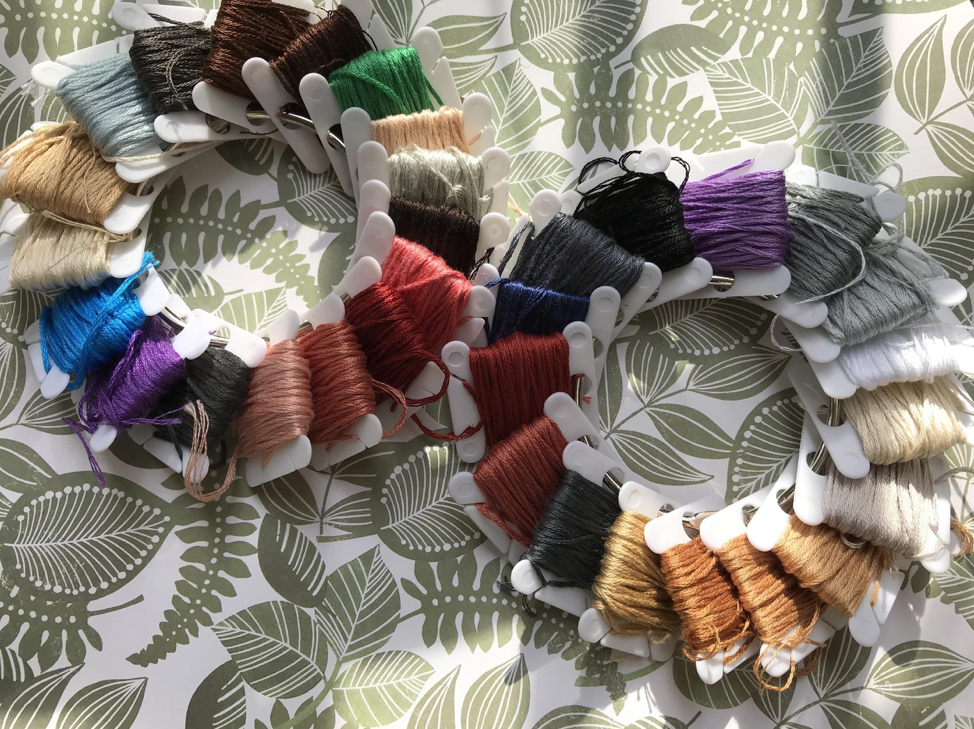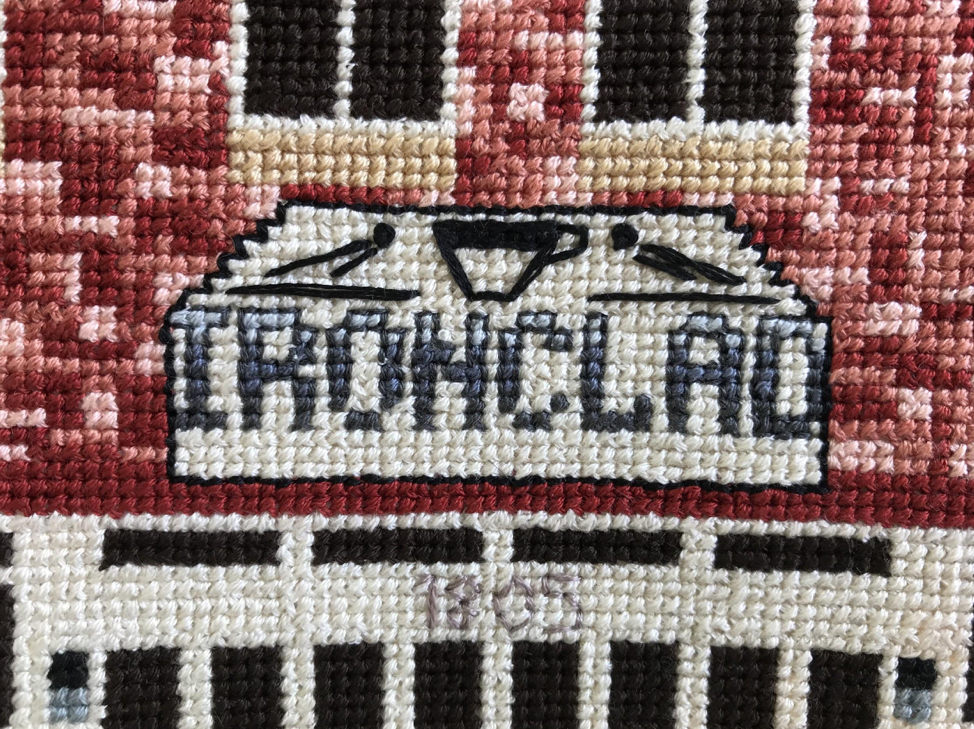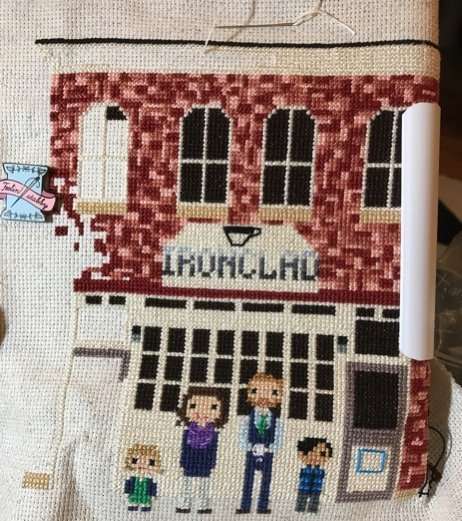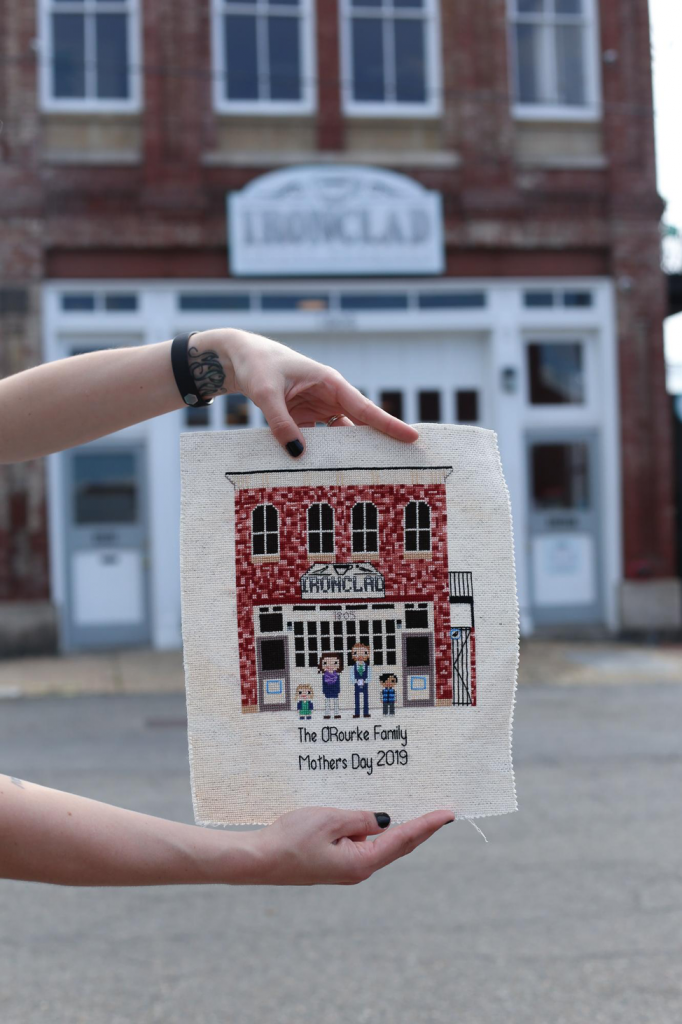
Hey y’all! I’m a full-time speech-language pathologist working in the public schools currently so only have time to stitch at night (thus my company name, Stitch At Nite) — check me out on Instagram, Facebook , and my website.
I’ve only been doing this a few years, having started by doing small gifts for friends and family. So I was excited (and, quite frankly, shocked) when the owner of one of the best local coffee shops here in Richmond, Virginia contacted me about commissioning a portrait of his family and their shop, Ironclad Coffee. I love their distinct coffee and their cozy, hip atmosphere, so this gave me more excuses to grab a cuppa joe there!

I started by designing the family, since they’re the focal point of the entire piece. The owner provided reference photos and was super open and told me that their son is adopted so his skin color is a bit darker than his. I love attention to detail and openness in a client! I used MacStitch to design this pattern. I’ve tried using Illustrator, but MacStitch just makes it so much easier to move elements around and play with color ideas. Once I had the people sketched, I used the height of the tallest person as the height of the doors, and that is how I began to scale the entire project.

I used MacStitch to design the building freehand off of reference photos. It was important to find the details that make the building distinct and beautiful: the shape of the windows, the molding at the top of the building, the small blue-outlined signs, and the main Ironclad sign (which was actually designed and painted by another local artist!) Placing the characters a few spaces lower than the building makes them appear to be standing on the sidewalk out front. I gave the owner the option of a design with a “hint of bricks” (just a few clusters of brickwork here and there) and “full-coverage bricks” with a large difference in pricing. You can tell which one he chose and thus, what my biggest challenge was with this piece: the bricks! Holy Brickwork, Batman!

I wanted to make sure that the brickwork did not look too planned or repetitive, so I tried the “parking method” where you have all the different threads on needles and stitch so there are no holes in the rows, but found that I got them tied up with one another. Since that didn’t work for me, I put the brick colors on a ring and stitched one color for a length, then the next color, then the next and just eye-balled where the colors should go, leaving holes and entire rows empty before filling them in with other brick colors. Stitching the brickwork took way longer than I expected (and — shhhh! — I even took a day off my real work because I was feeling behind).

The full stitch (tracked using the Toggl app) took 94 hours and 40 minutes — a record for me by far! I got to be there when he presented it to his wife and kids! They were all thrilled and the kids recognized themselves, which was really gratifying!
I enjoyed taking this piece with me to work on and stitch before dinners out with friends, rooftop happy hours, and even a faculty meeting at my school!
I would highly recommend stitching a building that you love, even if just for yourself, as it is a huge challenge but one that gave me more experience, new techniques, and a sense of accomplishment that I hadn’t yet felt with cross stitch! Finding the beauty and character in an old building can be so rewarding.

Some tips for how to get started with a brick building and family portrait
1-Design the people first! They are the focal point of any Stitch People-style design so they should have the brightest colors and be placed in front of the building. They can be in the center or off to one side depending on the building and any landscaping. Ask the customer/client for specific clothing or colors to make it more personal.
2-Set your scale based on the people, rather than on any pre-designed pattern details, such as trees or cacti. You can always edit and change the size of your details, but changing the scale of your people or building will be harder to do once you’ve begun.
3-If you are doing brickwork, make sure you use more than one shade of red and make sure to make “bricks”, where each color makes rectangles. I used five colors for the bricks (DMC thread colors: 355, 3712, 3777, 3778, 3779). I ended up putting those five colored bobbins on a ring and stitching a length of one color at a time.
4-Dream and plan big, but let yourself improvise as the project takes shape. I had some very detailed design plans but ended up simplifying them as I went along based on what I thought would look best while fulfilling the client’s ask. And, yeah, to hit my deadline I had to ditch some elaborate backstitching I had planned.
5-Give yourself more time than you expect. Brickwork takes a long time because it isn’t just straight stitching; you have to think about what colors to put where for every single stitch.
Want more photos of the front and back of this piece plus some of my other portraits and designs? Check me out on Instagram and Facebook or my website! (The professional photographs were taken by Katrine Limseth)